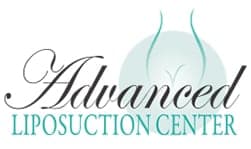Kerynail vs Acrylic and Gel Nails
What about wearing artificial nails over my infected nails?

 Artificial nails – Acrylic and Gel Nails, generally aren’t a problem for people without nail fungus infections. For those with nail fungus, however, wearing them can add a layer to the already thick, barely penetrable nail, further sealing in the fungus and making it worse.
Artificial nails – Acrylic and Gel Nails, generally aren’t a problem for people without nail fungus infections. For those with nail fungus, however, wearing them can add a layer to the already thick, barely penetrable nail, further sealing in the fungus and making it worse.
Gel nails and acrylics are the types most in use today. Both are basically made of plastic, but gels need ultraviolet curing, and high levels of UV light have been known to damage the living part of the nail, beneath the nail itself. Once any such damage occurs, if it’s at all accessible from the front margin of the nail (“under” the nail), that’s a perfect way for fungus to enter.
Problems also occur if the artificial nails are too long or too stiff. Then they can actually pry the real nail away from the nail bed, accomplishing the same thing, thereby letting fungus in. The adhesives used to glue the nails on can damage the nail, and some people are actually allergic t them. All of these things cause an inflammatory response, which aids in the entry of fungus to this irritated tissue.
So is Kerynail worth it?
It is for millions of women, and if you do choose to go ahead consider the following:
- Only go to licensed salons. These will have the actual paper license displayed prominently.
- Choose a clean looking salon. All implements should be sterilized between uses, and employees should wash their hands many times a day.
- Check these comfortable manicure tables options!
- Return for maintenance once every 3-6 month. Don’t let things get out of hand.
Here’s another tip. Every three months, remove your nails and go for a couple of weeks without artificial nails. This will allow the nail to breathe, effectively setting things back to normal.
Who should avoid artificial nails?
While artificial nails can be an attractive option for enhancing the appearance of natural nails, there are certain individuals who should avoid them due to potential risks and complications. Here are some groups of people who should exercise caution or avoid artificial nails altogether:
Allergic reactions: Some individuals may be allergic to the materials used in artificial nails, such as acrylic, gel, or the adhesives used to attach them. Allergic reactions can cause redness, itching, swelling, or even blistering. If you have a known allergy to these substances, it is advisable to avoid artificial nails.
Nail infections or conditions: If you have an existing nail infection, such as a fungal infection, or other nail conditions like psoriasis or eczema, artificial nails can exacerbate the problem. The artificial nails can trap moisture and create a breeding ground for bacteria or fungus, leading to further infection or irritation.
Nail damage: Individuals with weak or brittle nails should be cautious with artificial nails. The process of applying or removing artificial nails can cause further damage or weakening of the natural nail bed. It is important to allow the natural nails to recover and strengthen before considering artificial nails.
Certain occupations or activities: Individuals involved in professions or activities that require frequent handwashing, exposure to water, or manual labor may find that artificial nails are not practical or durable. The constant exposure to water and mechanical stress can cause the artificial nails to lift, break, or harbor bacteria, increasing the risk of infections.
Pregnant women: Some studies suggest that exposure to certain chemicals and fumes found in artificial nails, such as toluene and formaldehyde, may pose potential risks to pregnant women and their developing babies. It is advisable to consult with a healthcare professional for guidance on safe nail care during pregnancy.
Kerynails, on the other hand area resin based product, applied at a Podiatrist’s office. Resins are not porous to water and therefore do not rot the nail underneath. You are also instructed in how to treat the damaged nail to give it the best chance of heaking as it grows under the Kerynail. At the Advanced Liposuction Center, we also have nail lasers available to kill the fungus living under the nail prior to recreating a beautiful new nail that can last upwards of a year, depending on wear and tear.
